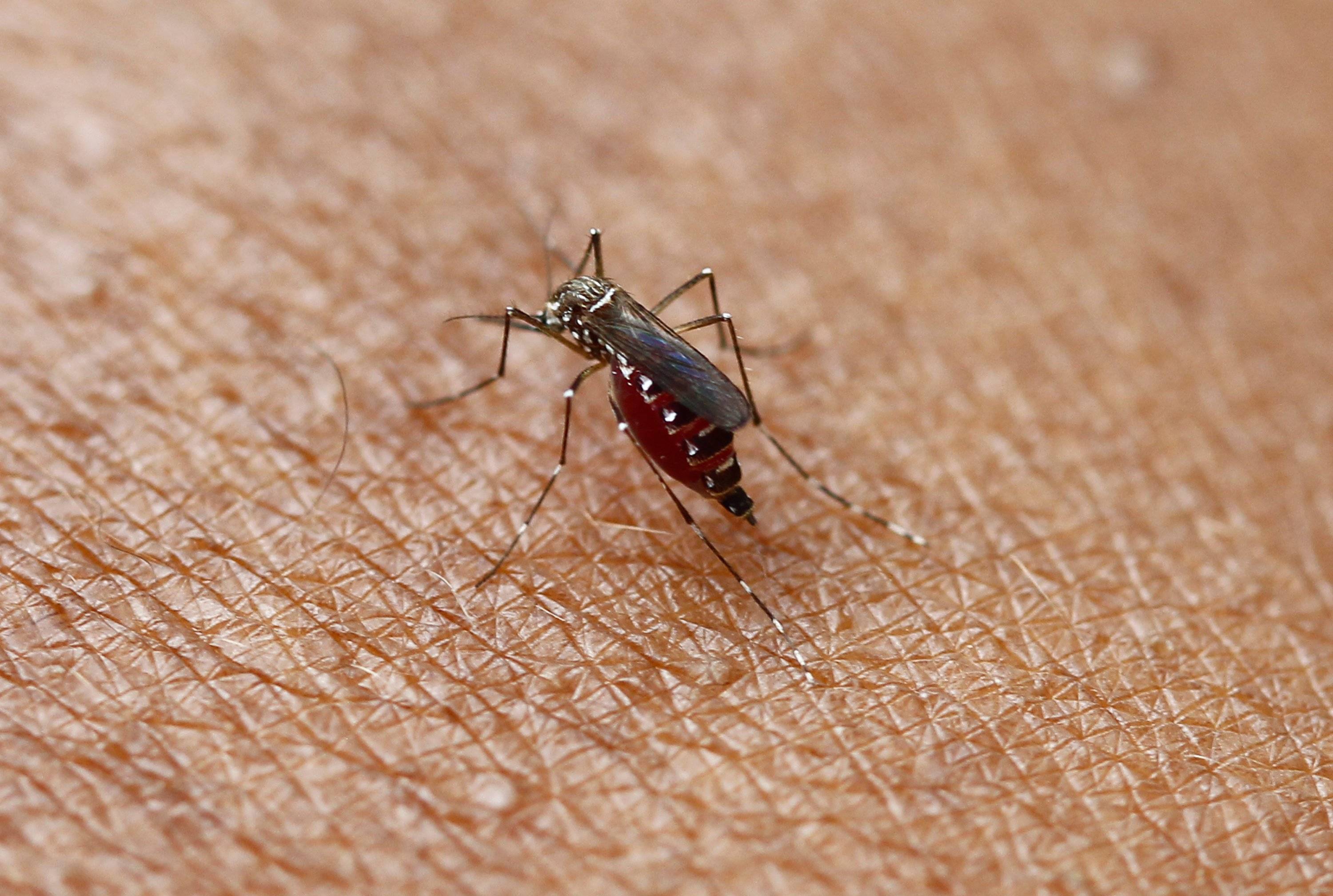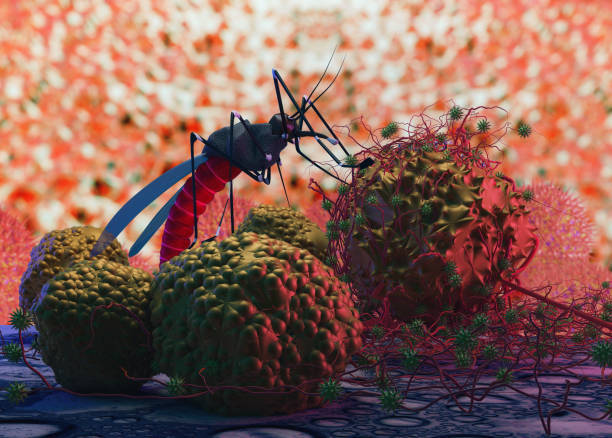Colombian scientists develop AI tool to predict malaria complications

The World Health Organization estimates that in 2023 there were 263 million cases of malaria and 597,000 deaths from the disease worldwide. Colombia is no stranger to these types of cases. In November 2024, according to the National Institute of Health, data showed an 81% increase in malaria cases in the country compared to that same year.
Malaria is a disease caused by the Plasmodium parasite, which is often confused with yellow fever and dengue fever because it is transmitted by vectors that are intermediate hosts of the disease, that is, they are found in animals that carry the disease but are not affected by it.
“Vectors are the connection between the initial host or animal that carries the disease and humans. Vectors are generally mosquitoes. These insects are responsible for carrying the disease from one place to another. Therefore, one of the reasons why the disease is so confused is because it is transmitted through these vectors,” says Dr. Luis Felipe Reyes, a highly regarded professor of infectious diseases at the Faculty of Medicine of the University of La Sabana.

Malaria is transmitted primarily through the bite of infected female Anopheles mosquitoes. Photo: EL TIEMPO Archive
With the aim of contributing to strategies to solve the root causes of malaria and based on the fact that the disease usually occurs in remote and jungle areas, where hospitals and health care points are not always within reach, a group of researchers from the University of La Sabana, made up of Alirio Bastidas-Goyes, Juan Leon-Ariza, Angela Guerrero, Mauricio Agudelo, Daniel Botero-Rosas and Eduardo Tuta-Quintero, set out to create an artificial intelligence that facilitates the diagnosis of the disease, a process that was also documented in the paper 'Application of artificial intelligence in the prediction of complications in patients with Malaria'.
"We created a system with artificial intelligence that analyzes very simple variables, without the need for advanced technology, and that can predict whether a person is going to have complications or not," explains Daniel Botero.

The model improves healthcare for patients who may have malaria. Photo: iStock
This development is innovative because it becomes a simple tool that can be operated by anyone involved in the healthcare sector. It allows, without the need for a thick blood smear test, which requires a microscope, a laboratory, and a bacteriologist, to identify the type of Plasmodium the patient has and determine whether complications are likely to develop. "With this, we don't need the test and we achieve an efficiency similar to that achieved with current methods," adds Botero.
The development of AI To achieve this development, experts identified a series of variables that allow them to identify the presence of the disease. In some cases, diseases such as dengue and yellow fever can be confused with malaria, so artificial intelligence can help differentiate one from the other and establish a more precise diagnosis.
In this context, factors such as mean arterial pressure, hemoglobin, white blood cell count, platelet count, total bilirubin, difficulty breathing, vomiting, previous history of malaria, previous use of antimalarial drugs, and persistent fever were taken into account by the experts.
"The idea was to unite these two aspects—both the feasibility of the test in non-active settings and the representation of the compromised organ systems caused by the disease—to combine this information and produce a result that tells us if there is a probability, and to what extent, that the disease will be severe and life-threatening," says Dr. Eduardo Tuta Quintero.

Malaria claims thousands of lives each year in regions such as Africa, Asia, and Latin America. Photo: iStock
Thus, using a database composed of 412 Colombian patients, a sample that, compared to other studies, is the most faithful to the reality of the country, allowed the development of the techniques of V cross, Random Cross Validation, Modified Retention Validation and Proportional Sample Percentage Validation to evaluate the performance of a neural network.
The breakthrough could have a significant impact, especially in rural or resource-limited areas, where accurate and rapid diagnoses can mean the difference between life and death.
"The model still needs to be validated with data from other medical centers, but it represents an important step toward integrating artificial intelligence into clinical practice for infectious diseases in high-burden settings like Colombia," Botero-Rosas concluded.
Therefore, in a second phase, the team of doctors and engineers is seeking to implement it so that people involved in the healthcare sector can, through an app, enter the requested data and determine whether there is a high or low probability of a patient developing complications.
To reach this second phase, Botero explains, it requires approval for use in humans and the prior approval of several validation filters. "Right now, we have to test it in external populations to see if it continues to work as well as it did in the internal validation, that is, based on the data we have."
With this tool in hand, the team of researchers seeks to contribute to a global trend known as personalized medicine, where support systems provide physicians with assistance in making better decisions.
Environment and Health Journalist
eltiempo

%3Aformat(jpg)%3Aquality(99)%3Awatermark(f.elconfidencial.com%2Ffile%2Fa73%2Ff85%2Fd17%2Fa73f85d17f0b2300eddff0d114d4ab10.png%2C0%2C275%2C1)%2Ff.elconfidencial.com%2Foriginal%2F118%2Ffff%2F9ce%2F118fff9ce5332b99118e7fbdacce4f96.jpg&w=1280&q=100)

%3Aformat(jpg)%3Aquality(99)%3Awatermark(f.elconfidencial.com%2Ffile%2Fbae%2Feea%2Ffde%2Fbaeeeafde1b3229287b0c008f7602058.png%2C0%2C275%2C1)%2Ff.elconfidencial.com%2Foriginal%2Ff04%2Fe17%2F972%2Ff04e17972abfe8f407fb05532250222f.jpg&w=1280&q=100)
%3Aformat(jpg)%3Aquality(99)%3Awatermark(f.elconfidencial.com%2Ffile%2Fbae%2Feea%2Ffde%2Fbaeeeafde1b3229287b0c008f7602058.png%2C0%2C275%2C1)%2Ff.elconfidencial.com%2Foriginal%2Faa8%2F56d%2Ff1a%2Faa856df1a5ce3fc529f921ba6d4ef66b.jpg&w=1280&q=100)
%3Aformat(jpg)%3Aquality(99)%3Awatermark(f.elconfidencial.com%2Ffile%2Fa73%2Ff85%2Fd17%2Fa73f85d17f0b2300eddff0d114d4ab10.png%2C0%2C275%2C1)%2Ff.elconfidencial.com%2Foriginal%2F416%2F92d%2Fbd3%2F41692dbd33af62eb735d8c9cb3631f4b.jpg&w=1280&q=100)